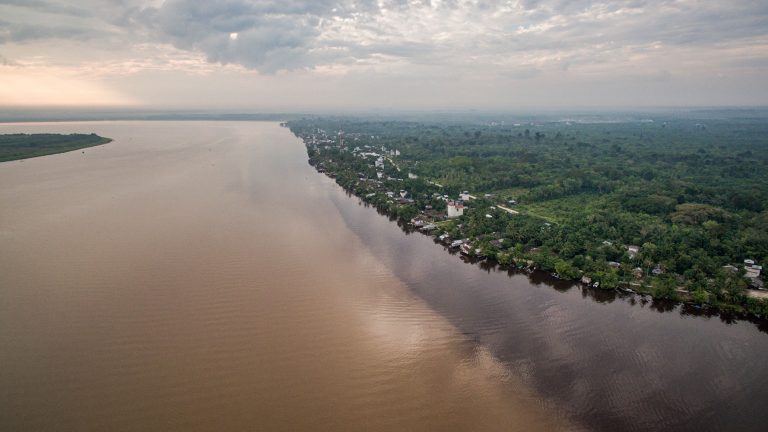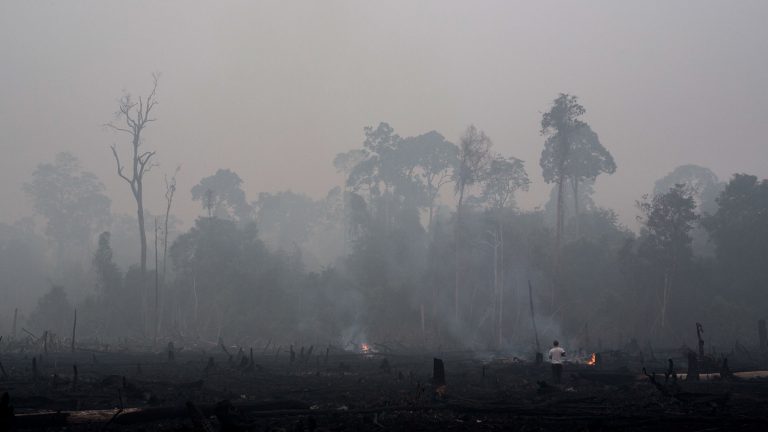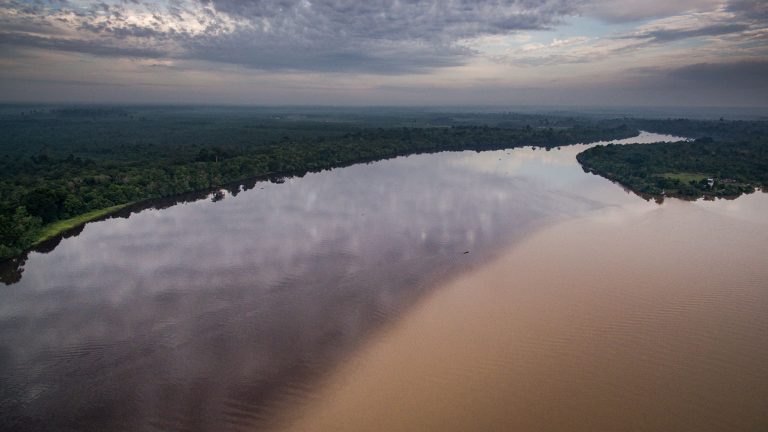Kampar is a long river that rushes down from the Bukit Barisan mountain range that forms the spine of the island of Sumatra along its west coast. The river then meanders through the Riau province, to finally pour out in the Malacca Straits, on the east coast of Sumatra. Along its long course the river dvides itself into two large branches known as the Kampar Kanan (the right branch of Kampar) and Kampar Kiri (its left branch). They then converge at Langgar in the district of Pelalawan at Kampar’s estuary. Here they are joined by many other rivers causing Kampar to funnel out into a wide river mouth. At each high tide, high waves from the sea flow in and meet the down stream current of the Kampar. Where the two opposing energies meet, and furthermore caused by the funnel shape of the river, Kampar’s phenomenal tidal bores emerge, rushing deep inland reaching to over 60 km. upriver. These tidal bores are known locally as “Bono”, which rush in with loud roaring sound at a speed of 40 kilometers an hour. The surf on the river can rise as high as 4 to 6 meters, at times creating barrels, the darling of surfers.
Directed by Nanang Sujana and narrated by Bramantyo Prijosusilo, this video was produce for Green Indonesia initiative.




